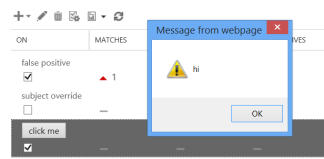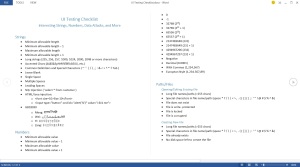Testers are often encouraged to automate more and more test cases. At first glance, the case for more test cases makes sense—the more tests you have, the better your product is tested. Who can argue with that? I can.
Creating too many test cases leads to the condition known as “test case bloat”. This occurs when you have so many test cases that you spend a disproportionate amount of time executing, investigating, and maintaining these tests. This leaves little time for more important tasks, such as actually finding and resolving product issues. Test case bloat causes the following four problems:
1. Test passes take a long time to complete.
The longer it takes for your test pass to complete, the longer you have to wait before you can begin investigating the failures. I worked on one project where there were so many test cases, the daily test pass took 27 hours to finish. It’s hard to run a test pass every day when it takes more than 24 hours to complete.
2. Failure investigations take a long time to complete.
The more tests you have, the more failures you have to investigate. If your test pass takes a day to complete, and you have a mountain of failures to investigate, it could be two days or longer before a build is validated. This turn-around time may be tolerable if you’re shipping your product on a DVD. But when your software is a service, you may need to validate product changes a lot faster.
For example, the product I’m working on is an email service. If a customer is without email, it’s unacceptable for my team to take this long to validate a bug fix. Executing just the highest-priority tests to validate a hot-fix may be a valid compromise. If you have a lot of test cases, however, even this can take too long.
3. Tests take too much effort to maintain.
When your automation suffers from test case bloat, even subtle changes in product functionality can cause massive ripples in your existing test cases, drastically increasing the amount of time you spend maintaining them. This leaves little time for other, more valuable tasks, such as testing new features. It’s also a morale killer. Most testers I know— the really good ones, at least— don’t want to continually maintain the same test cases. They want to test new features and write new code.
4. After a certain threshold, more test cases no longer uncover product bugs—they mask them.
Most test cases only provide new information the first time they’re run. If the test passes, we can assume the feature works. If the test fails, we file a bug, which is eventually fixed by development, and the test case begins to pass. If it’s written well, the test will continue to pass unless a regression occurs.
Let’s assume we have 25 test cases that happily pass every time they’re run. At 3:00 a.m. an overtired developer then checks in a bug causing three tests to fail. Our pass rate would drop from 100% to an alarming 88%. The failures would be quickly investigated, and the perpetrator would be caught. Perhaps we would playfully mock him and make him wear a silly hat.
But what if we had 50 test cases? Three failures out of 50 test cases is a respectable 94% pass rate. What about a hundred or two hundred tests? With this many tests, it’s now very possible that there are some amount of failures in every pass simply due to test code problems; timing issues are a common culprit. The same three failures in two hundred tests is a 99% pass rate. But were these failures caused by expected timing issues, or a real product bug? If your team was pressed to get a hot-fix out the door to fix a live production issue, it may not investigate a 99% pass rate with as much vigor as an 88% pass rate.
Bloat Relief
If your automation suffers from test case bloat, you may be able to refactor your tests. But you can’t simply mash four or five tests with different validation points into a single test case. The more complicated a test, the more difficult it becomes to determine the cause and severity of failure.
You can, however, combine test cases when your validation points are similar, and the severity of a failure at each validation point is the same. For example, if you’re testing a UI dialog, you don’t need 50 different test cases to validate that 50 objects on the screen are all at their expected location. This can be done in one test.
You can also combine tests when you’re checking a single validation point, such as a database field, with different input combinations. Don’t create 50 different test cases that check the same field for 50 different data combinations. Create a single test case that loops through all combinations, validating the results.
When my test pass was taking 27 hours to complete, one solution we discussed was splitting the pass based on priority, feature, or some other criteria. If we had split it into three separate test passes, each would have taken only nine hours to finish. But this would have required three times as many servers. That may not be an issue if your test pass runs on a single server or virtual machines, however I’ve worked on automation that required more than twenty physical servers–tripling your server count is not always an option.
In addition to the techniques discussed above, pair-wise testing and equivalence class partitioning are tools that all testers should have in their arsenal. The ideal solution, however, is to prevent bloating before it even starts. When designing your test cases, it’s important to be aware of the number of tests you’re writing. If all else fails, I hear you can gain time by investigating your test failures while travelling at the speed of light.
Filed under: Test Planning | Tagged: Equivalence Class Partitioning, Pair-wise Testing, Test Case Bloat, Tester Morale | 2 Comments »





